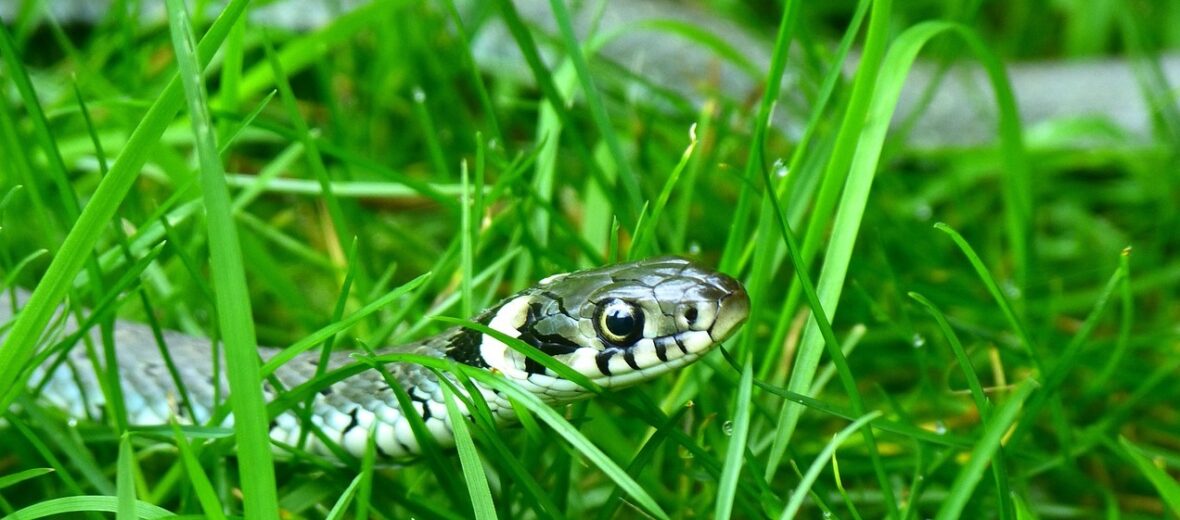
The grass snake, aka water snake or ringed snake, can be found in Europe, Africa, and into central Asia. These non-venomous colubrids prefer open woodlands, edge habitats like woodland borders & field margins. They’re also never far from ponds, lakes, and streams. Even though these snakes face the threats of habitat loss and destruction at the hands of mining and quarrying; hunting; trapping; and pollution, these snakes still have an abundant and stable population, and are listed as Least Concern by the IUCN.
First the Stats…
Scientific name: Natrix natrix
Weight: Up to 1.10 lbs.
Length: Up to 47.24 inches
Lifespan: Up to 25 years
Now on to the Facts!
1.) Grass snakes prey pretty much exclusively on the common frog and the common toad. Snakelets will also sometimes eat insect larvae and ants.
2.) A group of snakes is called a bed, den, knot, nest, or pit.
3.) Like other snakes, grass snakes are solitary and only come together to mate.
4.) These snakes are diurnal (active during the day).
5.) They brumate (hibernation for reptiles) during the colder winter months.
But wait, there’s more on the grass snake!
6.) The grass snake can travel upwards of 900+ feet a day in search of prey.
7.) If captured, they will release a garlic-scented musk from their anal glands, and they also may feign death (play dead); excreting blood from their mouth and nasal passages at the same time. They may also strike at their attacker, but with a closed mouth.
Did you know…?
If caught by an animal or human, they will sometimes regurgitate (throw-up) the contents of their stomach.
8.) Mating season takes place in April.
9.) Females lay up to 40 eggs from June – July.
10.) In order for the eggs to hatch, the surrounding temperatures need to be from 70°F – 82°F, and there must also be high humidity.
But wait, there’s still more on the grass snake!
11.) Snakelets are hatched precocial (self sufficient), like all snakes, and measure up to 7 inches in length.
12.) Badgers, domestic cats, domestic dogs, hedgehogs, herons, owls, storks, and weasels all prey on these snakes.
13.) Grass snakes are protected in England and you cannot sell or harm them without a license. However, you can capture them and keep them as pets.
Now a Short Grass Snake Video!
Be sure to share & comment below! Also, check out the Critter Science YouTube channel. Videos added regularly!
Want to suggest a critter for me to write about? Let me know here.
Some source material acquired from: Wikipedia & IUCN



